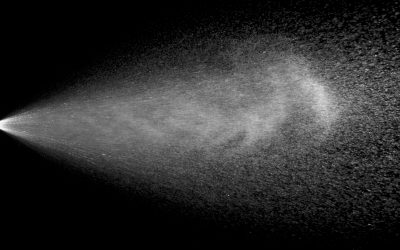Navigating Strategy to Futureproof You Fire Suppression
Futureproofing your fire suppression is a big concern for many companies. Fire protection technology continues to evolve, and regulatory changes are reshaping how businesses protect their critical assets. One of the most significant shifts affecting engineered clean agent suppression systems—particularly FM-200® (HFC-227ea)—is the American Innovation and Manufacturing (AIM) Act.
The AIM Act, signed into law in 2020, aims to phase down the production and consumption of hydrofluorocarbons (HFCs), including FM-200®, due to their environmental impact. This shift is driving changes in how FM-200® is sourced, sold, and applied, making it essential for facility managers to reassess their fire suppression strategy for long-term compliance and efficiency.
At Premier Fire & Security, we help businesses navigate these changes, ensuring they invest in future-proof fire protection solutions. Let’s dive into what the AIM Act means for FM-200® and explore the best options moving forward.
What Is FM-200® and Why Is It Being Phased Down?
FM-200®: A Trusted Clean Agent Suppression System
FM-200® (HFC-227ea) has been widely used for decades in data centers, telecommunications facilities, archives, and other sensitive environments. As an engineered clean agent gas, it offers:
✔ Rapid fire suppression (extinguishing fires in seconds)
✔ No water damage (safe for electronics and documents)
✔ Minimal residue (ensuring operational continuity)
✔ Safe for occupied areas
The Environmental Impact of FM-200®
While FM-200® is highly effective, it is a hydrofluorocarbon (HFC), a class of chemicals known for their high global warming potential (GWP). The AIM Act mandates a gradual reduction in HFC production and imports, which is affecting FM-200® availability and pricing.
Understanding the AIM Act and Its Impact on Futureproofing Your Fire Suppression
The AIM Act follows the Kigali Amendment to the Montreal Protocol, which seeks to curb greenhouse gas emissions by phasing down HFCs over the next 15 years. Under this regulation:
- HFC production and imports in the U.S. were cut by 10% in 2022
- A 40% reduction is set for 2024
- By 2036, HFC use will be reduced by 85%
How This Affects FM-200® Users and Buyers
Rising Costs & Limited Supply
- The AIM Act’s production limits have already caused significant price increases for FM-200®.
- Many suppliers are experiencing shortages as production quotas tighten.
Regulatory Compliance Pressures
- New installations using FM-200® may face stricter regulations and higher fees.
- Facility owners must plan ahead for system maintenance and refills.
Shifts Toward Alternative Clean Agents
- With FM-200® supply constraints, businesses are exploring next-generation suppression systems with lower environmental impact.
What Are the Best Alternatives to FM-200®?
As FM-200® becomes less available and more expensive, many businesses are turning to next-generation clean agents that comply with AIM Act regulations while maintaining effective fire suppression.
1. FK-5-1-12: The Leading Replacement
✔ Zero ozone depletion and low global warming potential (GWP = 1)
✔ Similar performance to FM-200® but more sustainable
✔ Safe for people and sensitive electronics
Why Choose It?
- Future-proof against regulatory restrictions
- Lower refill costs compared to FM-200®
- Reliable long-term availability
2. Inert Gas Systems (IG-55, IG-541, IG-100)
✔ 100% naturally occurring gases (Argon, Nitrogen, CO₂)
✔ No global warming potential (GWP = 0)
✔ Safe for occupied spaces
Why Choose It?
- Eco-friendly with no environmental restrictions
- No risk of future bans or supply shortages
- Ideal for mission-critical facilities
3. Water Mist Fire Suppression
✔ Uses ultra-fine water droplets to suppress fires without flooding
✔ Less water usage than traditional sprinkler systems
✔ Highly effective for data centers and industrial sites
Why Choose It?
- Alternative for applications traditionally using FM-200®
- Minimal water damage risk
- No chemical agents required
Next steps for futureproofing your fire suppression.
With FM-200® becoming less practical due to rising costs and regulatory constraints, businesses should proactively:
✔ Evaluate Existing FM-200® Systems
- Assess whether replacement is necessary before prices spike further.
- Consider a phased transition to a future-proof suppression system.
✔ Explore Alternative Clean Agents
- Work with a trusted fire protection provider like Premier Fire & Security to identify the best option.
- Consider long-term sustainability and regulatory compliance when selecting a system.
✔ Plan for Long-Term Fire Suppression Needs
- If you currently use FM-200®, ensure reliable access to refills and maintenance.
- If you’re installing a new system, explore alternative solutions now to avoid costly changes later.
Get Expert Guidance from Premier Fire & Security
Futureproofing your fire suppression doesn’t have to be overwhelming.
At Premier Fire & Security, we specialize in helping businesses:
✔ Assess their current fire suppression systems
✔ Understand FM-200® phase-down implications
✔ Choose sustainable, cost-effective alternatives
✔ Ensure long-term compliance with fire protection regulations
Don’t wait for supply shortages or costly retrofits!
Contact Premier Fire & Security today for a free consultation on the best fire suppression strategy for your facility.
Schedule a Consultation Now


